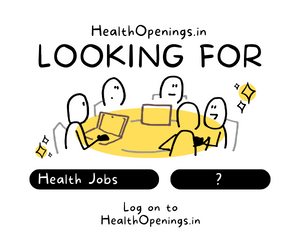In recent years, the integration of 3D printing technology into the healthcare sector has ushered in a transformative era of personalized medical solutions. This innovative approach empowers medical professionals to tailor treatments and interventions according to the unique needs of individual patients, marking a significant leap forward in the quest for improved patient care and treatment outcomes.
Benefits of 3D Printing for Personalized Medical Solutions:
The marriage of 3D printing and healthcare has unlocked a realm of possibilities that were previously unimaginable. One of the most compelling advantages lies in the fabrication of patient-specific prosthetics, implants, and medical devices. Unlike traditional manufacturing methods, which often result in one-size-fits-all solutions, 3D printing offers the capability to create intricately designed products that are precisely customized for each patient. This not only ensures a superior fit and enhanced functionality but also promotes optimal patient comfort.
Examples of 3D-Printed Medical Innovations:
The success stories of 3D printing in the medical field are nothing short of revolutionary. Consider the case of customized prosthetic limbs, which are meticulously crafted to match the individual’s anatomy and movement patterns. This level of precision has not only restored mobility but also significantly improved the quality of life for countless amputees. Similarly, dental implants and orthopedic implants, when tailor-made through 3D printing, seamlessly integrate with the patient’s existing structures, resulting in better long-term outcomes.
Moreover, the integration of 3D-printed models into surgical planning has proven to be a game-changer. Surgeons can now meticulously map out complex procedures using physical replicas of the patient’s anatomy, allowing them to anticipate challenges and optimize their approach. This innovative use of 3D printing has translated into safer surgeries and shorter recovery times.
How 3D Printing Reduces Costs and Enhances Patient Care:
Traditional manufacturing processes often come with substantial costs and time constraints. 3D printing, on the other hand, has streamlined production, reduced material waste, and expedited the manufacturing timeline. The ability to create personalized medical solutions in a more efficient manner has translated into cost savings for both medical institutions and patients. Additionally, the enhanced fit and functionality of 3D-printed products have led to a decrease in the need for costly and painful follow-up surgeries, significantly improving the overall patient experience and treatment outcomes.
Ethical Considerations and Regulatory Challenges:
As the adoption of 3D printing in healthcare gains momentum, ethical and regulatory considerations have come to the forefront. Intellectual property rights related to 3D-printed medical solutions raise questions about ownership and licensing, as the digital nature of the designs makes them susceptible to unauthorized reproduction. Moreover, ensuring the quality and safety of 3D-printed medical devices is essential to prevent potential harm to patients. Regulatory bodies must strike a delicate balance between promoting innovation and safeguarding patient well-being through stringent approval processes.
The convergence of 3D printing technology and personalized medical solutions represents a paradigm shift in the healthcare landscape. The ability to create tailor-made prosthetics, implants, and devices has not only improved patient comfort and outcomes but has also demonstrated the potential to reshape the very nature of medical treatment. While challenges related to ethics and regulation persist, the promise of 3D printing in healthcare is undeniable. As we navigate this exciting frontier, it is imperative that stakeholders work collaboratively to harness the full potential of 3D printing while upholding the highest standards of patient safety and care. Indeed, we stand on the cusp of a new era in healthcare – an era defined by precision, personalization, and the limitless possibilities of 3D printing.




